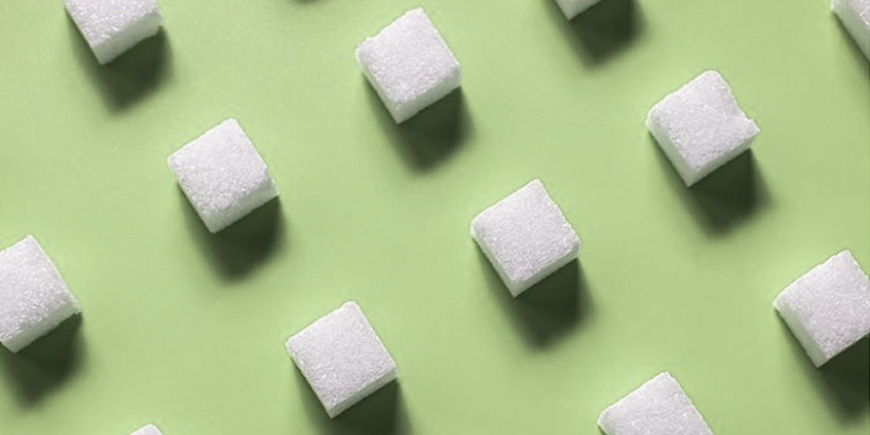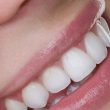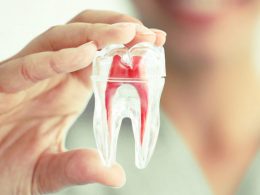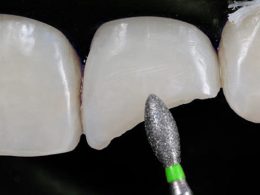Table of Contents
Dental cavities or tooth decay is the damage that can occur to a tooth when bacteria normally found in the mouth produce acids that attack the enamel or tooth surface. This can result in the formation of holes or cavities in the tooth due to the destruction and loss of its mineralized structure. If tooth decay is not treated, it can cause pain, infection, and even tooth loss.
Some of the most important advances in contemporary Dentistry have occurred in the restorative area, specifically in filling materials and adhesion techniques for the treatment of dental caries. This has allowed us to practice more conservative, aesthetic and long-lasting treatments.
In recent years, the profession has improved considerably in:
- Diagnostic procedures (digital detectors, transillumination and chemical developers).
- Anesthesia techniques (new techniques and more powerful drugs).
- Dental isolation systems, with the new nitrile rubber dams (more elastic and suitable for those allergic to latex).
- Caries removal and cavity preparation systems (micro-abrasion, ozone therapy, CamSight and Carisolv®).
- The adhesion systems, so remarkable the advances, that they merit the realization of courses and entire congresses to learn to manipulate the latest generation products.
- Restorative materials such as interface elastic composites, quartz hybrid composites, and highly polishable, fluorescent nanoparticle composites for surfaces.
There are many ways to reconstruct a tooth affected by dental caries, with a great diversity of techniques, combination of materials and clinical criteria. Our work philosophy consists of having all the knowledge and possibilities to be able to offer the best procedure for each particular case. That is why our dental fillings and reconstructions are aesthetic, durable and with a low risk of producing tooth sensitivity.
However, the idea is always not to get there, since with the necessary precautions and care, it is an extremely easy pathology to prevent.
Here are some of the most frequently asked questions about tooth decay and its treatment:
What Are the Causes of Tooth Decay?
They are actually multiple, but the most important is for sure, poor oral hygiene. The permanent accumulation of dental plaque and its enormous bacterial content is the perfect breeding ground for the microorganisms in the mouth to generate large amounts of acids that attack and destroy the hard tissues of the tooth: enamel, dentin and root cement.
Other 4 etiological factors of great importance are genetic predisposition, the amount of salivary secretion, the pH of the saliva and the diet or type of food.
What Is Tooth Enamel?
Tooth enamel is a covering composed of hydroxyapatite (the hardest mineral in the human body) of great purity, which covers the crown of the dental organs. Its maximum thickness is between 2 and 2.5 mm in the anterior teeth and up to 3 mm in the posterior ones. The enamel is translucent, white or blue-gray in color.
What Is Dentin?
Dentin is the tissue immediately below the enamel. It is a permeable tubular structure, 70% composed of hydroxyapatite, while 20% is organic matter and the remaining 10%, water. It is also the layer that gives the tooth its color, and normally its hue is yellowish.
This tissue is responsible for protecting the pulp or dental nerve, and also transmitting impulses from the enamel or tooth root to it.
What Is Pulp?
Dental pulp is the soft tissue located inside a tooth, within the pulp cavity, and which contains the nerve, blood vessels and connective tissue. The pulp cavity extends towards the root as the conduit or root canal, and then opens towards the periodontium or dental support system.
This structure is what gives vitality to the tooth and controls the vast majority of its functions.
What Is Dental Plaque?
It is a soft and sticky substance of a white to yellow color, which is normally formed on the surface of the teeth and margin of the gums by the accumulation of food debris, bacteria, human proteins and saliva.
Some bacteria that are part of the normal microbiota of the mouth are concentrated in dental plaque. Although not all are harmful, some can break down the sugars in the food you eat and transform them into acids that attack the teeth and gums, destroying tooth enamel, and causing tooth decay and periodontal disease. That is why its periodic removal is so important, at least three times a day.
How Are Cavities Formed?
Tooth decay occurs when sugars in food and beverages interact with the bacteria in dental plaque, forming highly aggressive acids. Every time you eat or drink something that contains sugars, and you have plaque accumulated on your teeth, these acids attack and dissolve the enamel and other hard tissues.
Consuming sugary or acidic snacks and drinks between meals, without brushing afterwards, can increase the risk of the disease; since the teeth would be subject to a constant attack by plaque bacteria.
The microorganisms most frequently associated with the onset and development of caries are Streptococci of the mutans group, Lactobacillus and Actinomyces.
Some think that this is a problem that only appears in children, due to the high consumption of sweets and candies; however, cavities are also common in adulthood.
What Are Their Main Signs and Symptoms?
When they are small or incipient, they do not bother and are very difficult to detect, even for an experienced Dentist. Then, as they grow, they form spots and cavities on the teeth, which are characterized by generating sensitivity or pain during the ingestion of sweet, cold or hot foods.
If they advance and reach the dental pulp, they cause infection, necrosis, intense and spontaneous pain and abscesses at the gum level. In addition, it is common to observe at this stage, great destruction or fracture of the crown of the tooth.
What Happens If They Are Not Treated On Time?
They advance progressively until they reach the dental pulp, generating intense pain and spreading the infection to the periodontal tissue. Hopefully, the tooth can be restored with a root canal, post and core, and porcelain crown. In other cases, it will be necessary to remove it.
What Areas of the Teeth Are Most Susceptible to Cavities?
Chewing surfaces and proximal or contact surfaces, as food debris and plaque can get stuck and remain between the teeth. However, any part of the tooth can be at risk.
How Is a Decayed Tooth Restored?
If the decay is not very large, the Dentist will remove the infected hard tissue and repair the tooth with a restoration. Generally, aesthetic restorative materials based on composites or dental resins are used.
If the pulp was affected, a root canal treatment and subsequent dental restoration with an inlay, onlay or ceramic crown will be necessary to reinforce the devitalized structure and prevent its subsequent fracture.
The last resort is always tooth extraction, in case the decay has spread below the gum margin.
How to Do to Prevent or Avoid Cavities?
The most important thing is to learn, master and apply a proper oral hygiene technique. Ask your Dentist to take the time to instruct you on brushing and flossing.
Brush properly at least 3 times a day. Always complement with the interdental brush and dental floss to access the spaces between the teeth and areas of difficult access. If you cannot do it after every meal, at least rinse yourself vigorously with plain water. Chewing sugar-free gum after a meal can also be useful, as it helps you produce more saliva and neutralize any acids that have formed.
Ask your Dentist if you should use an electric toothbrush or an oral irrigator, such as Waterpik, to increase the effectiveness of your technique. Always complement the process with the mouthwash of your choice, to eliminate more bacteria and freshen your breath.
“With an Appropriate Oral Hygiene Technique and Periodic Professional Check-Ups, Tooth Decay Is One of the Easiest Oral Pathologies to Prevent”.
DENTAL TIP
In addition, there are other resources that will surely reduce the risk of tooth decay, or at least, decrease its incidence. Among them we find:
Pit and Fissure Sealants
The closure of the pits and fissures of the dental surfaces by means of adhesive substances that then remain firmly attached to the enamel, constitutes a preventive and therapeutic procedure of extraordinary value.
Sealants have 3 fundamental preventive effects: they mechanically seal pits and fissures with an acid-resistant resin, make it difficult for bacterial adhesion and colonization in the area, and facilitate cleaning of pits and fissures by physical methods such as tooth brushing and chewing.
Although these sealants are traditionally indicated in children, at DENTAL VIP we also consider their application to adults useful.
Topical Applications of Fluorine
The application of fluoride is complementary to the placement of the sealants of pits and fissures, because while the fluorine acts to protect the smooth dental surfaces, the sealants are introduced into the deepest areas of the chewing surfaces; to prevent the remains of food and bacteria penetrate them, decaying the enamel.
For decades, the favorable effect of this substance in the prevention of dental caries has been proven. Its mechanism of action consists of reinforcing the hard structures of the hypomineralized tooth, by promoting the inclusion of minerals in its structure (calcium and phosphate), due to its great ionic activity.
Dietary Recommendations
Avoid frequent and constant consumption of sweets and carbohydrates, at least in those circumstances where you know you cannot brush instantly. Also increase the consumption of fiber and vegetables, since when chewing them they exert a great effect of autoclysis and remove a large amount of bacterial plaque.
Periodic Checkups and Professional Cleanings
Visit your Dentist every 6 months for a dental checkup and cleaning. Only through scrapers and ultrasonic instruments it is possible to remove dental calculus or tartar deposits (mineralized dental plaque), which due to their characteristic roughness retain much more plaque than dental surfaces.
In addition, during these consultations, your Dentist will be able to supervise and reinforce the different oral hygiene techniques, to correct defects in their execution and reduce dental plaque rates to the minimum possible.
Another benefit of this protocol is the early detection of any incipient caries, the treatment of which will be simple, painless and without compromising the vitality and structural integrity of the tooth.
We Are Just One Step Away!
Globalization and dental tourism are two extraordinary tools for accessing world-class Dentistry. Currently millions of people travel to other countries in search of opportunities and prices that allow them to face their dental treatments and recover their smile.
Wherever you are, generally in just a few hours you will be able to get to Venezuela, move to a comfortable hotel and start your oral rehabilitation process with Dental Implants, Porcelain Veneers and 100% Metal-Free Ceramic Structures; at only a fraction of the cost you would have to pay in your home country.
Almost certainly traveling or not traveling will mean the difference between satisfaction and resignation, or at best; between just getting “something” or be able to reach “the best option”. At DENTAL VIP we are very good hosts and excellent professionals.
Contact us and ascertain how traveling to Venezuela can improve your self-esteem and quality of life!












